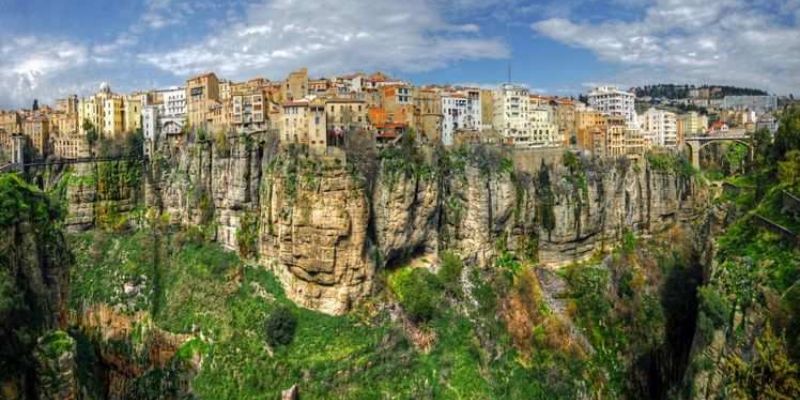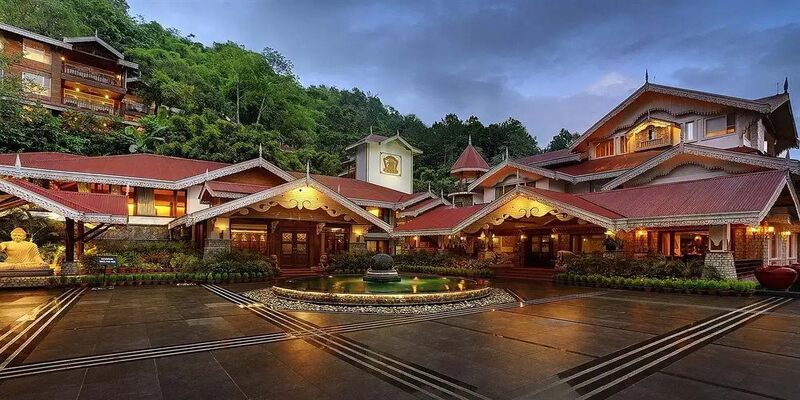Malaysians use traditional clothing as a cultural emblem of the country. There are three prominent cultures in Malaysia. Malaysia is a cosmopolitan country that wears traditional dress. The traditional clothes of Malaysia are appealing.
Malaysia's major communities include Malay, Indian, Chinese, and various minority populations. Each of them wears their traditional attire. However, the majority of Malaysians dress like Westerners. Malaysians often wear traditional attire exclusively on special occasions.
Traditional Clothes of Malaysia
Here are the Malaysian dress styles for both men and women.
Malay
Malaysia's largest ethnic population is Malay, and in the country's official language, the term for this clothing is Pakaian. Malay national costume has profound origins in Malay culture. Men and ladies wear separate traditional attire, which is typically colorful.
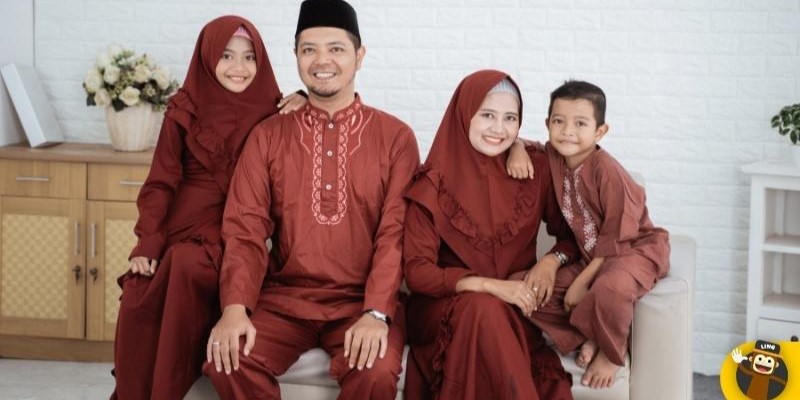
Men
Malay men's typical costume is called Baju Melayu, consisting of a tunic combined with slacks and a sarong called an ampin. Men often wear the traditional Songkok or Kopiah cap with it. Some guys choose to wear silk shirts with slacks.
Women
Kanban or sarongs knotted above the chest was the old customary clothing for Malay women. The Malaysian dress Baju Kurung is the contemporary traditional attire for ladies, consisting of a below-the-knee length, full-sleeved top and an extra-long skirt termed a kain. On the head, this outfit is generally accompanied by a scarf.
Chinese
Malaysia's Chinese ethnic community comprises various dialect groups. The majority of Chinese people in Malaysia do not dress traditionally. They often dress casually to be more comfortable and are seen in traditional clothes only during festivals, particularly the Chinese New Year festival.
Men
Although Chinese men in Malaysia rarely wear traditional dresses. But they wear their traditional Tang suit only at festivals. A Tang suit is a flowery blazer with a collar and a knot at the waist. Overseas, Chinese people called it after the Tang Empire. Because the Tang kingdom was dominant, foreigners referred to the Chinese as Tang people.
Women
During festivals and formal ceremonies, Chinese ladies in Malaysia wear a long dress called a cheongsam. Cheongsam, or qipao, is a silk fabric one-piece costume with an open collar and waist clasps in the middle or sides. Older ladies wear ankle-length trousers with a loose-fitting shirt with center clasps.
Indians
Because trade between India and Malaysia is very easy, Malaysian Indians acquire a significant proportion of traditional clothing from their ancestral land. Malaysia's Indian population has a thriving culture. Thus, in terms of traditional clothing, Malaysian Indians have remained true to their traditions and culture.
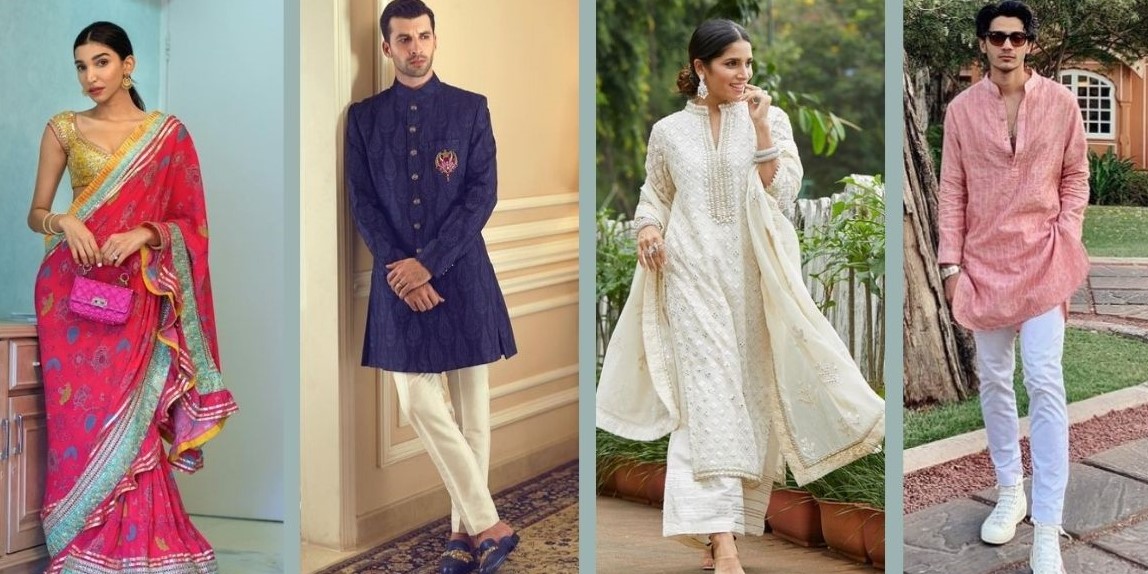
Men
In Malaysia, Indian men usually wear a lungi-kurta, kurta-pajama, or dhoti-kurta. Kurta is a type of knee-length shirt with collars. Moreover, Sherwani is the other popular kurta variant often worn at weddings and other events. Dhoti and lungi are both baggy bottoms regarded as the most comfortable clothing amongst Indian clothes.
Women
The majority of Indian women in Malaysia dress in a saree and a top that resembles a blouse. A sari is a six-yard length of fabric wrapped around the body in the shape of a skirt with folds in the middle, with a portion of the same cloth covering one shoulder and hanging below the knees.
Peranakan
Peranakans are a Malaysian community that migrated from China and married Malays. They still worship their ancient gods and stick to traditional rituals but have adjusted to Malay culture. They have learned the Malay language and look very like the natives. Peranakans, also known as Baba Nyonya, where Baba means males, whereas Nyonya means women.
Men
The Babas dress similarly to Chinese males, in clothing named baju lokchuan. Some Babas also wear a batik-style shirt or a shirt with long sleeves with a Chinese collar.
Women
The Nyonya kebaya is available in two basic versions. The baju panjang is a longer, straight-cut coat that falls to the knee, and older women typically wear it. The other is a shorter skirt which young ladies wear.
Kadazan
The Kadazandusun are Malaysia's biggest ethnic group. Their traditional clothing has been properly preserved since their time. Compared to other ethnic groups, the embroidery and decorations on the Kadazan clothes are often simple and elegant.
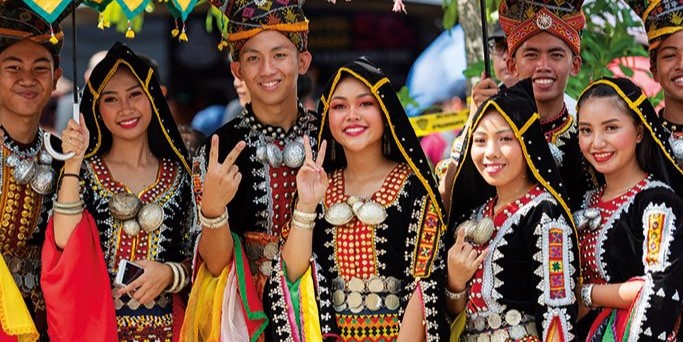
Men
Men wear traditional attire: a jacket with gold design elements, pants, and a siga headpiece. Dastar fabric is woven into the symbol.
Women
Paper is their traditional, embroidered one-piece costume made from golden thread with a belt of silver coins. They also use Siung, which is a headpiece made with bamboo strips. The outfit is often composed of black silk or velvet fabric.
Iban
The Ibans are a Malaysian native people and they wear the traditional clothes of Malaysia. They are distinguished by their warrior-like attire and their production of bright, multicolored cotton fabrics known as pua kumbu.
Men
Baju burung is the traditional attire of Iban men. They wear warrior-style clothing with a jacket on top and a woven fabric skirt at the bottom. Males also wear a silver belt, an anklet, and a headgear.
Women
Iban women's traditional attire usually consists of bidang fabric for sewing women's skirts. It comprises Marek Ampang, a chest ornament, a headgear called sugu tinggi, and silver items such as belts and bracelets.
Portuguese Immigrants
Melakan Portuguese traditional costume symbolizes their background as descendants of 16th-century Portuguese settlers. They are open-minded people, just like their ancestors, yet religious principles are more important to them than other Western and European countries.
Men
Portuguese men in Malaysia often wear jackets with pants and waist belts. Men often dress according to Western ideals.
Women
Women wear multilayered skirts, usually in red or black. Some ladies also wear a scarf, a wide skirt, an embroidered bodice, and backless sandals.
Conclusion
The preservation of traditional clothes of Malaysia best represents the national identity of its people. People dress in traditional Malaysian attire, as you can see in the article. Various Malaysia costume, male and female, demonstrate how diverse and lovely Malaysian clothing is. Moreover, traditional Malaysian clothing raises awareness and fosters a sense of oneness among its people.

